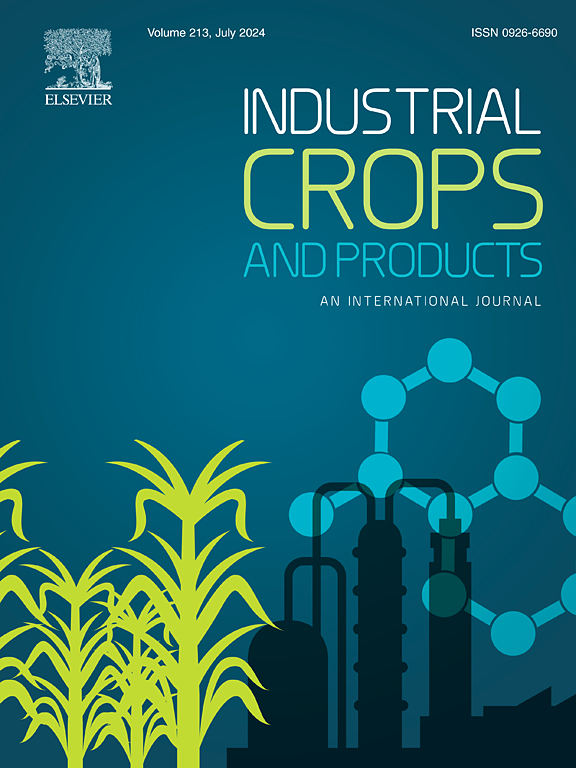纤维素/MOF纳米杂交种衍生出3D互联多孔碳基lioh -复合材料,用于太阳能驱动的化学储热
IF 5.6
1区 农林科学
Q1 AGRICULTURAL ENGINEERING
引用次数: 0
摘要
面对可再生能源与实际需求不相容所带来的可持续性困境,具有长期存储能力的水合盐化学储热(CHS)已成为清洁能源利用不足的一线希望。在这项工作中,制备了细菌cellulose@zeolitic-imidazolate框架纳米杂化物(BC@ZIF-8),并将其衍生的3d多孔碳网络(BZAC)作为LiOH·CHS材料的多孔纳米基质。合成的Li/BZAC2复合材料的能量密度为2317.6 kJ kg−1,这归功于三维互联网络结构、高度发达的分层孔隙度和BZAC2的巨大表面积的协同作用。此外,Li/ BZAC2-60在经过20次多循环运算后,仍能保持95.8% %的原始热量,显示出其惊人的循环持久性。Li/ BZAC2-60具有优异的导热性,也展示了令人印象深刻的太阳能驱动光热转换能力。这项工作可以通过模板策略和实施领域的多样化,为金属有机框架衍生的碳质网络的进一步功能化提供一种创新的选择。本文章由计算机程序翻译,如有差异,请以英文原文为准。

Cellulose/MOF nanohybrids derived 3D interconnected porous carbon based LiOH-composite for solar-driven chemical heat storage
In the face of the sustainability dilemma caused by the incompatibility between renewable energy and actual demand, hydrated salt chemical heat storage (CHS) with long-desired storage capabilities has become a silver line for the underutilization of clean energy. In this work, a bacterial cellulose@zeolitic-imidazolate framework nanohybrid (BC@ZIF-8) was prepared and its derived 3D-porous carbon network (BZAC) was implemented as the porous nanomatrix for LiOH·CHS material. The resultant Li/BZAC2 composites present a fabulous energy density of 2317.6 kJ kg−1 credited to the synergistic collaboration of the 3D interconnected network architecture, highly developed hierarchical porosity, and enormous surface area of BZAC2. Besides, the Li/BZAC2–60 could keep 95.8 % of the original heat after 20 multicyclic operations, revealing its marvelous cycle persistence. The Li/BZAC2–60 with eminent thermal conductivity also demonstrates impressive solar-driven photothermal conversion capability. This work may deliver an innovative option for the further functionalization of the carbonaceous network derived from metal-organic frameworks via templating strategies and diversification of its implementation domains.
求助全文
通过发布文献求助,成功后即可免费获取论文全文。
去求助
来源期刊

Industrial Crops and Products
农林科学-农业工程
CiteScore
9.50
自引率
8.50%
发文量
1518
审稿时长
43 days
期刊介绍:
Industrial Crops and Products is an International Journal publishing academic and industrial research on industrial (defined as non-food/non-feed) crops and products. Papers concern both crop-oriented and bio-based materials from crops-oriented research, and should be of interest to an international audience, hypothesis driven, and where comparisons are made statistics performed.
 求助内容:
求助内容: 应助结果提醒方式:
应助结果提醒方式:


